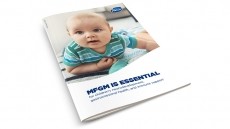Infant formula NPD insights? Maeil Dairies supported-study highlights vitamin B12, K, and D lacking in breastmilk

The study also found that the concentration of thiamin (B1), biotin (B7), and folic acid (B9) was not “considerably different” in the subjects’ breast milk.
Funded by the National Research Foundation of Korea (NRF) and supported by South Korea’s leading industry player Maeil Dairies, the study analysed the breast milk composition of 580 maternal milk samples collected from 2017 to 2018.
Most of the subjects came from South Korea (254), followed by China (137), Vietnam (97), and Pakistan (92).
The amount of vitamin B12 was found to be lowest in Vietnamese mothers, with only an average concentration of 2.2%.
Pakistan has the highest concentration at 25.8%, followed by China (13.5%), and South Korea (7.1%).
On the other hand, the concentration of vitamin D2 and D3 was lower than the limit of detection (0.5 µg/L for D2 and 1µg/L for D3) in the breast milk across all four countries.
Thus, the researchers said it was necessary for mothers to supplement the two vitamins.
The validity of this recommendation is also supported by previous studies which showed the supplement of B12 during pregnancy and early lactation could increase B12 content in breast milk.
Vitamin K was another nutrient lacking in the samples. Only 40% to 70% of the mother’s milk in each country contained the vitamin at levels above the limit of quantitation (LOQ) at 2.7 ppb.
Although the researchers said that it was “still difficult to conclude” if the human milk of Asian mothers could provide ample vitamins for their babies, it could be a reference for new infant formula development.
“The data exhibited a general view of vitamin status in Asian maternal milk. It could provide useful information for mother and baby care that may be used as a reference to establish the best infant formula for Asian babies,” the researchers said.
Countries differences
A number of differences were seen in the breast milk composition of mothers from different countries.
First, riboflavin (B2), pantothenic acid (B5), and pyridoxine (B6) level were found in the lowest concentration in Vietnamese mothers, with the average concentration of the nutrients at 19.9 ± 34.7 µg/L, 1266.1 ± 1242.7 µg/L, and 56.4 ± 60.4 µg/L.
In contrast, Pakistan ranks consistently highest for these three nutrients, with the average concentration of B2 at 58.0 ± 43.3 µg/L, B5 at 2557.4 ± 2576.5 µg/L, and 196.7 ± 225.3 µg/L for B6.
Again, the researchers have recommended supplementation of these vitamins amongst the mothers.
Second, retinol (A) and tocopherol (E) were in highest concentrations in Vietnamese maternal milk at an average concentration of 813.6 ± 609.0 µg/L and 4413.4 ± 5274.2 µg/L respectively.
Korean maternal milk ranked lowest in terms of vitamin A (356.5 ± 180.1 µg/L) and Chinese maternal milk lowest for vitamin E at 1907.5 ± 1309.1 µg/L.
Third, the Chinese mothers have a highest concentration of lutein in their breast milk at 66.1 µg/L, while that of the others was between 40 µg/L and 50 µg/L.
Similarly, the researchers have attributed the difference to the mother’s diet.
Lastly, the Pakistani maternal milk had the lowest vitamin B9 concentration at 2%, while Chinese maternal milk had the highest at 53.2%.
Source: Nutrients
A Comparison of Vitamin and Lutein Concentrations in Breast Milk from Four Asian Countries
https://doi.org/10.3390/nu12061794
Authors: Jaehan Kim, et al











